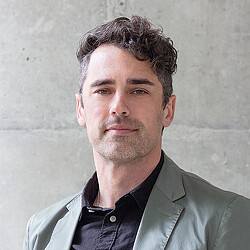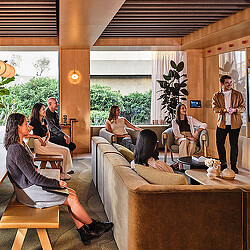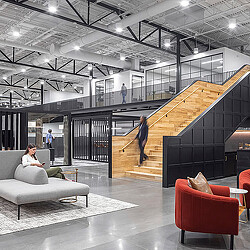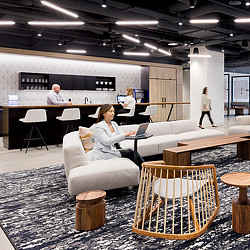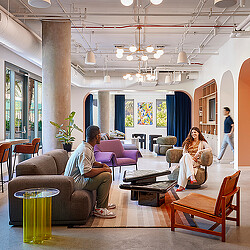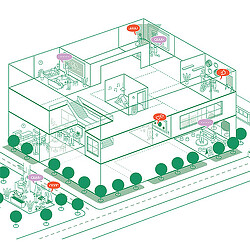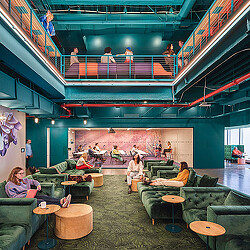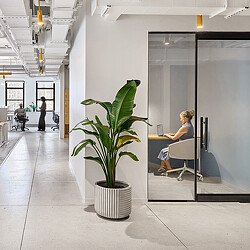How Strategic Shifts Can Reignite Employee Engagement
In today’s workplace, employee engagement isn’t just a buzzword — it’s a vital force behind organizational success, and a strategic imperative.

According to the Workforce Institute and UKG, nearly 70% of full-time employees say their manager has a greater impact on their mental health than their doctor or therapist — and just as much as their spouse. This striking insight underscores a powerful truth: the workplace is not just where we do our jobs — it’s where our well-being is shaped every day.
In today’s workplace, employee engagement isn’t just a buzzword — it’s a vital force behind organizational success. True engagement goes beyond job satisfaction or productivity metrics. It’s about the emotional and intellectual commitment employees bring to their work. When people feel connected to a company’s mission, supported by their environment, and empowered to grow, they don’t just contribute — they thrive.
This shift is multigenerational. According to Forbes’ coverage on the 2024 Gallup State of the Global Workplace Report, data points to a shift in attitudes toward hybrid work: Once championed mainly by Gen Z, it’s now adopted by 45% of Baby Boomers and 52% of Gen Xers in 2025 — rising from just 30% and 38% in 2022. Although older generations are aligning with Gen Z preferences, this shift is more pronounced in younger employees; in Gallup’s report, only 35% of Gen Z employees are engaged at work — trailing Millennials’ 42% and Gen X’s 48% — highlighting Gen Z’s discontent when roles lack purpose and flexibility.
At Gensler, we think about engagement as the energy that fuels innovation, collaboration, and resilience. It’s what transforms routine attendance into meaningful participation. Engaged employees are emotionally invested, cognitively present, and behaviorally aligned with their organization’s goals. They feel a sense of belonging, see a path forward, and understand how their contributions make an impact. Fundamentally, they are capable of elevated and sustained levels of performance, creativity, and innovation, while others are reduced to reactive, task-based production.
But engagement doesn’t happen by accident. It begins with intentional organizational development — clear values, accessible and responsive leadership, and a culture that prioritizes humanity at work. Strategy should lead the charge, with design as the on-the-ground expression of those values. When these core drivers are aligned, workplaces evolve into ecosystems that not only attract and retain talent but also elevate performance, foster loyalty, and build a culture where people feel seen, heard, and valued.
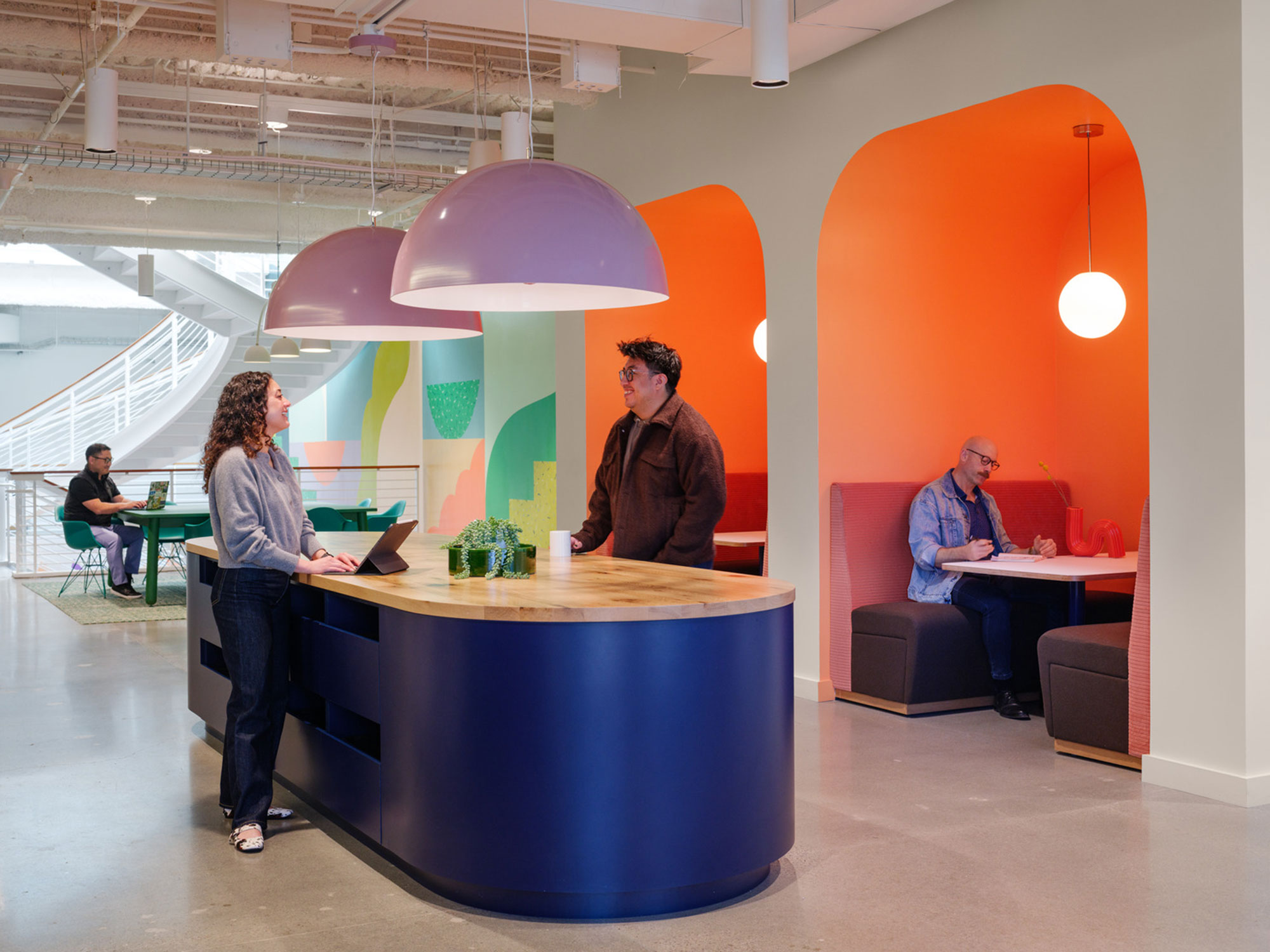
Why Has Employee Engagement Shifted in the Post-Pandemic Workplace?
The past five years have brought the relationship between work and well-being into the spotlight. Isolation often provoked introspective thinking or exacerbated mental health challenges, while the radical change in workflow caused reflection on the U.S. work culture. According to a 2023 Mind Share Partners Mental Health at Work report, in 2023, 61% of full-time U.S. workers experienced at least one symptom of a mental health condition — up from 59% in 2019.
At the crossroads, there is an emerging disenchantment with work. As employers implemented return policies, employees reported a negative impact on their mental health, citing a lack of work-life balance and emotionally draining work. The clear discrepancy between employer plans and employee needs predicts a disconnected future for the workplace — when unity and belonging are needed most.
Burnout, coined by the World Health Organization as an occupational phenomenon, has rippled throughout companies — the symptoms of exhaustion, feelings of negativism and cynicism about one’s job, and reduced efficiency have magnified the importance of developing systems that engage and benefit both employers and employees.
There are strong correlations between employer ethos and employee behavior; those who feel supported by their employer are less likely to experience mental health issues and underperform. Employees who feel supported are also more likely to remain at their job and have higher productivity levels with fewer instances of absenteeism. When mental health challenges and disengagement are at an all-time high, employers need to direct their attention to fortifying the connection between employee well-being and innovation so that everyone can thrive.
This shift in employee engagement and workplace perspective is recognizable through tangible behavior. Previously, compensation was the primary metric for engagement. This has shifted to something more organic: culture. Increasingly, employees are prioritizing flexibility over income, advocating for adaptable hybrid work, encouraging awareness of neurodivergent conditions and needs, and prioritizing a positive company environment, while pushing back on hustle culture. Behavioral indicators like culture are harder for organizations to gauge, compared to easily quantifiable financial indicators. To track, measure, and address culture, an integrated, holistic strategy is necessary for success.
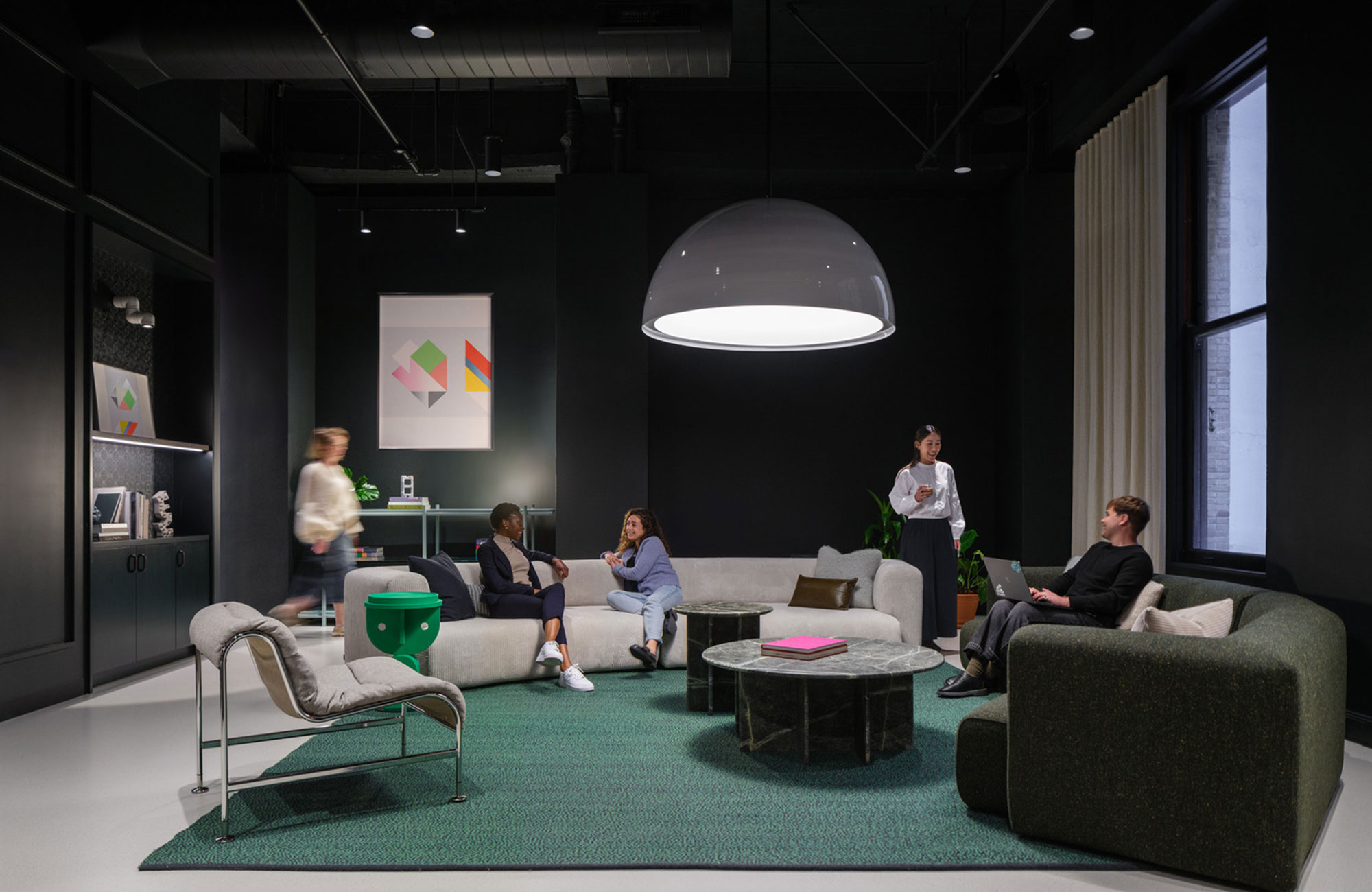
How Can Strategy Guide Organizations to Lead More Boldly?
Our current systems are no longer efficient or sustainable; given the holistic and humane signals of change, future-forward thinking is necessary, requiring speculation, courage, and imagination. Instead of relying on the automated systems that characterize past corporate culture, it’s time to funnel our energy into humanity that fuels our progression. Fundamental to this shift is highlighting underrepresented voices and narratives that shape the employee’s experience, listening, and cultivating an environment conducive to their growth and development.
To begin to lead boldly, organizations need to explore strategic considerations to address the signals of change and build a thriving community.
Burnout & Stress
With the shift in engagement, the first step towards a successful management strategy requires internal questioning to reflect on the company’s current culture and organization. In terms of burnout and stress, consider these two questions:
- How are you actively addressing the cause of burnout?
- How are you upskilling leadership to identify and support?
To actively address the cause of burnout, go straight to the source: workplace strategy teams can conduct in-depth discovery sessions, working alongside employees to understand the emotional and cultural dynamics of the organization. Leaders must engage directly and proactively, surveying employees to uncover mental health stressors and relational gaps that might fly under the radar, and facilitating workshops that include prompts around well-being, inclusion, and psychological safety. The resulting data tells the story of engagement, not just occupancy, expanding an organization’s metrics to build a dashboard that blends behavioral analysis with employee sentiment and storytelling.
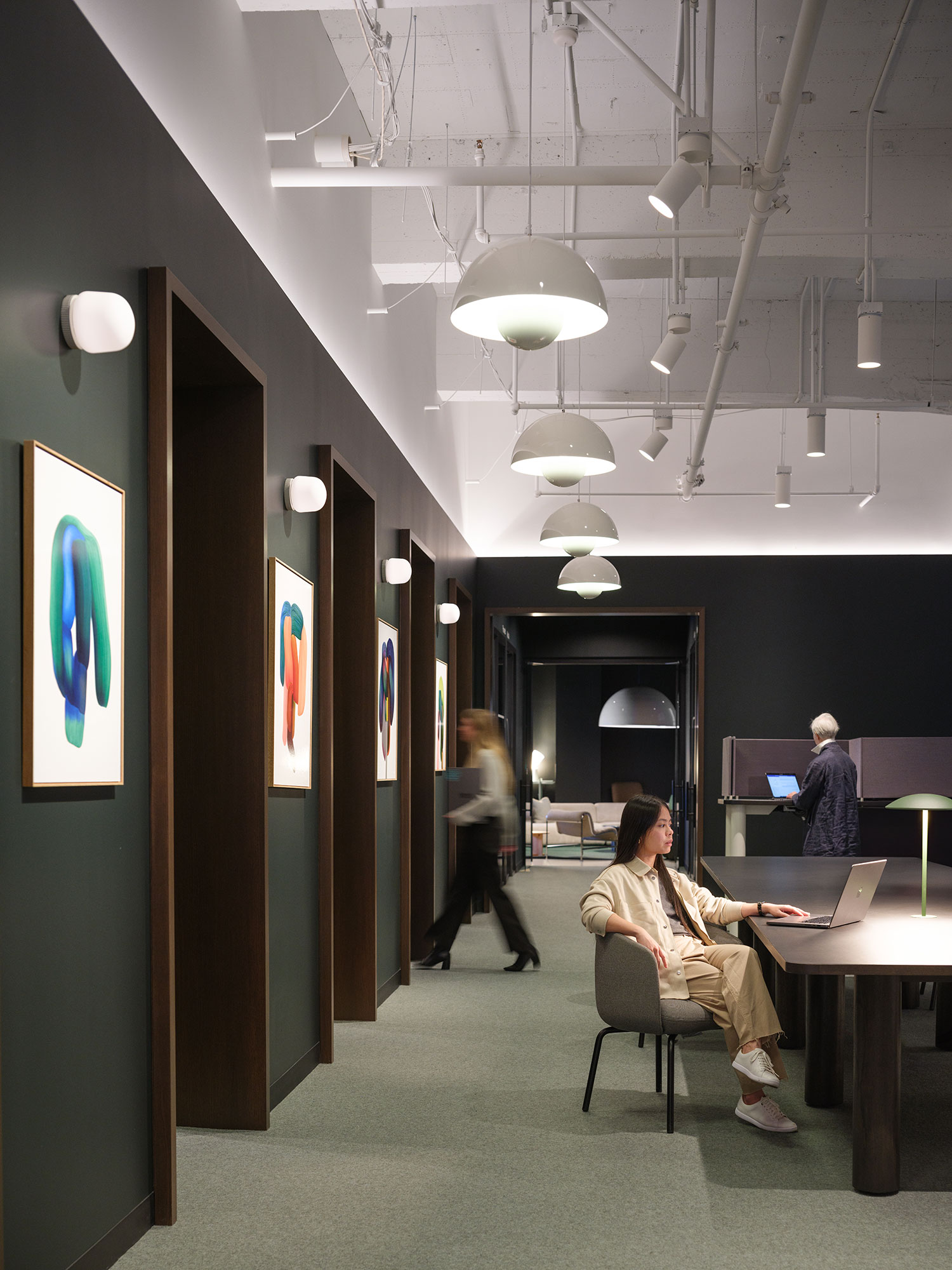

Connection, Loneliness, & Culture
To encourage connection, combat loneliness, and cultivate a positive culture, reflect on three key questions:
- How are we intentionally designing for connection and belonging?
- How are we nurturing culture to encourage genuine participation?
- Do we have clarity on non-business performance indicators? Non-business KPIs such as cultural decay markers — unspoken “rules,” fear of speaking up, or cross-functional breakdowns — are universally important, but how are we measuring them?
To build a more connected workforce, organizations should design rituals, habits, leadership models, and policies in addition to a variety of physical spaces like wellness rooms and recharge zones. Observe how employees use the areas and ask them directly through co-design sessions to define what belonging and well-being mean to them. Then, set clear well-being KPIs, such as perceived stress reduction and sense of belonging, and use post-occupancy evaluations to gather both qualitative and quantitative feedback on the behavioral design’s impact.
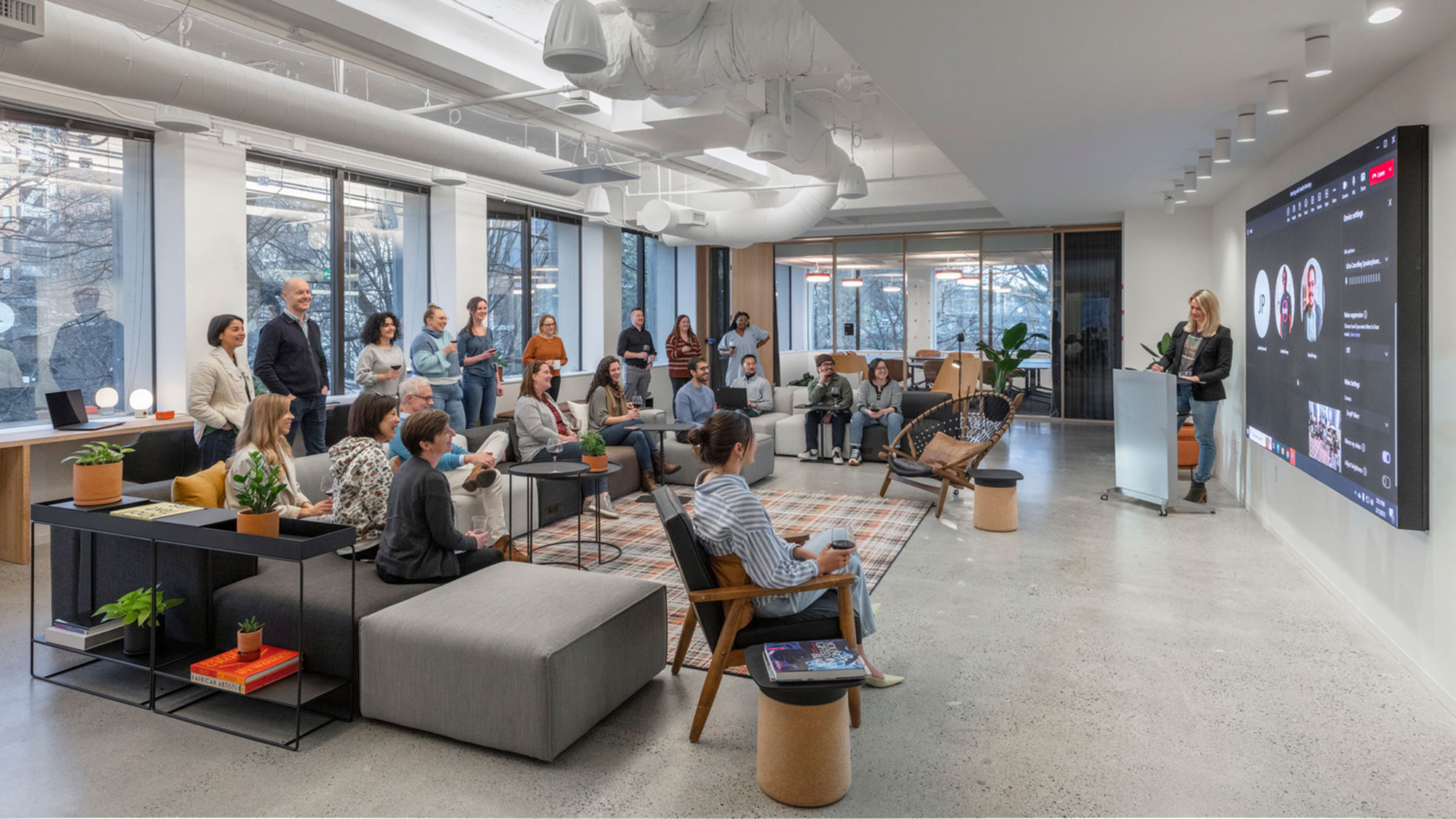
Inclusion & Belonging
Belonging doesn’t occur from one change in design or one workshop about mental health. How you maintain these changes and build an engaged company culture is crucial. Examine these prompts:
- How do we ensure that inclusivity isn’t a policy but a practice?
- How are we normalizing conversations around mental health?
To be truly inclusive, these concepts must be incorporated into every design aspect. Consider neurodiversity and sensory well-being through zoning, lighting, and acoustics, guaranteeing not just one space dedicated to neurodiversity, but office-wide changes. To uphold this support and provide opportunities for open mental health discussions, offer ongoing coaching or change management teams to help activate spaces in alignment with mental health goals, and introduce mental health and belonging audits for pre-design assessment.
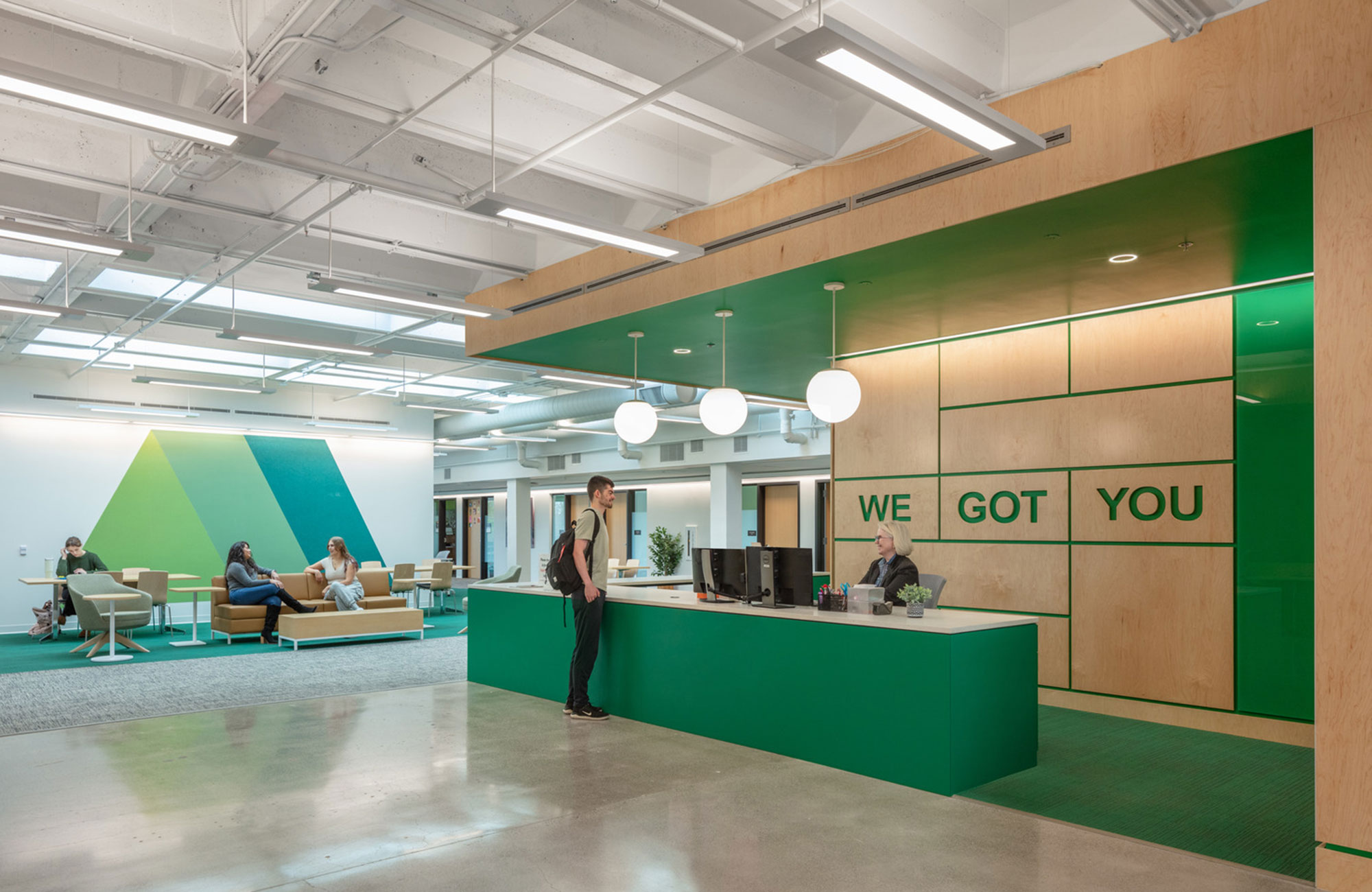
Talent
Today, salary is not the only driver for attracting and retaining talent — company culture has joined the ranks. Understanding what needs and values fresh talent retains is key to company growth and advancement. Explore your success in this area by asking:
- How are we differentiating ourselves in a market where culture is valued as much as compensation?
- Do we feel we have clarity on what the workforce is expecting from their employer?
Hybrid work decentralizes the execution of functional tasks, so physical space must act as a cultural anchor, designed for moments of connection, restoration, and camaraderie. While programming your space, reframe your strategy. Instead of hitting a quota of meeting rooms or collaboration spaces, consider what rituals happen in these rooms that bring people together. This is where talent differentiates your organization from others; when authentic changes in the workplace create connections, instead of expecting them. When your organization both engages and executes, talent will mirror that action, engaging with the organization and executing productively and enthusiastically towards your mission.
Reframing Engagement as a Strategic Imperative
In a world where work and well-being are increasingly intertwined, employee engagement must be treated as a strategic priority and not an afterthought. This moment calls for organizations to act with intention, listen deeply, design thoughtfully, and lead boldly. Through aligning culture, space, and leadership around a shared commitment to mental wellness and belonging, companies can build more resilient, human-centered workplaces. Engagement isn’t a checkbox — it’s a continuous investment in people, purpose, and possibility. The future belongs to those willing to embrace this shift with clarity and compassion.
For media inquiries, email .

